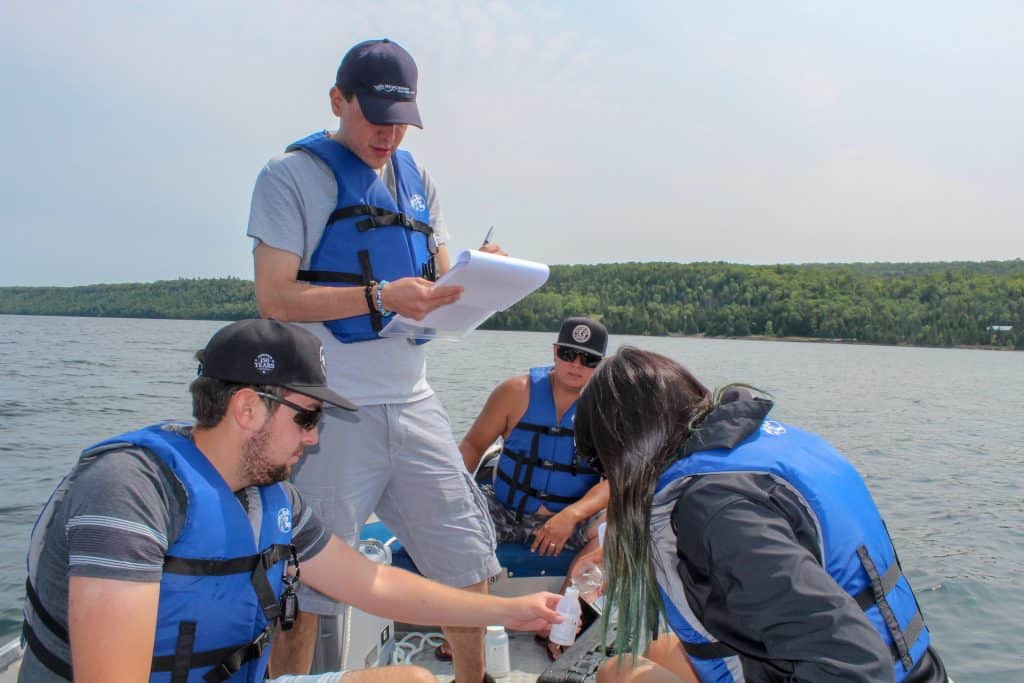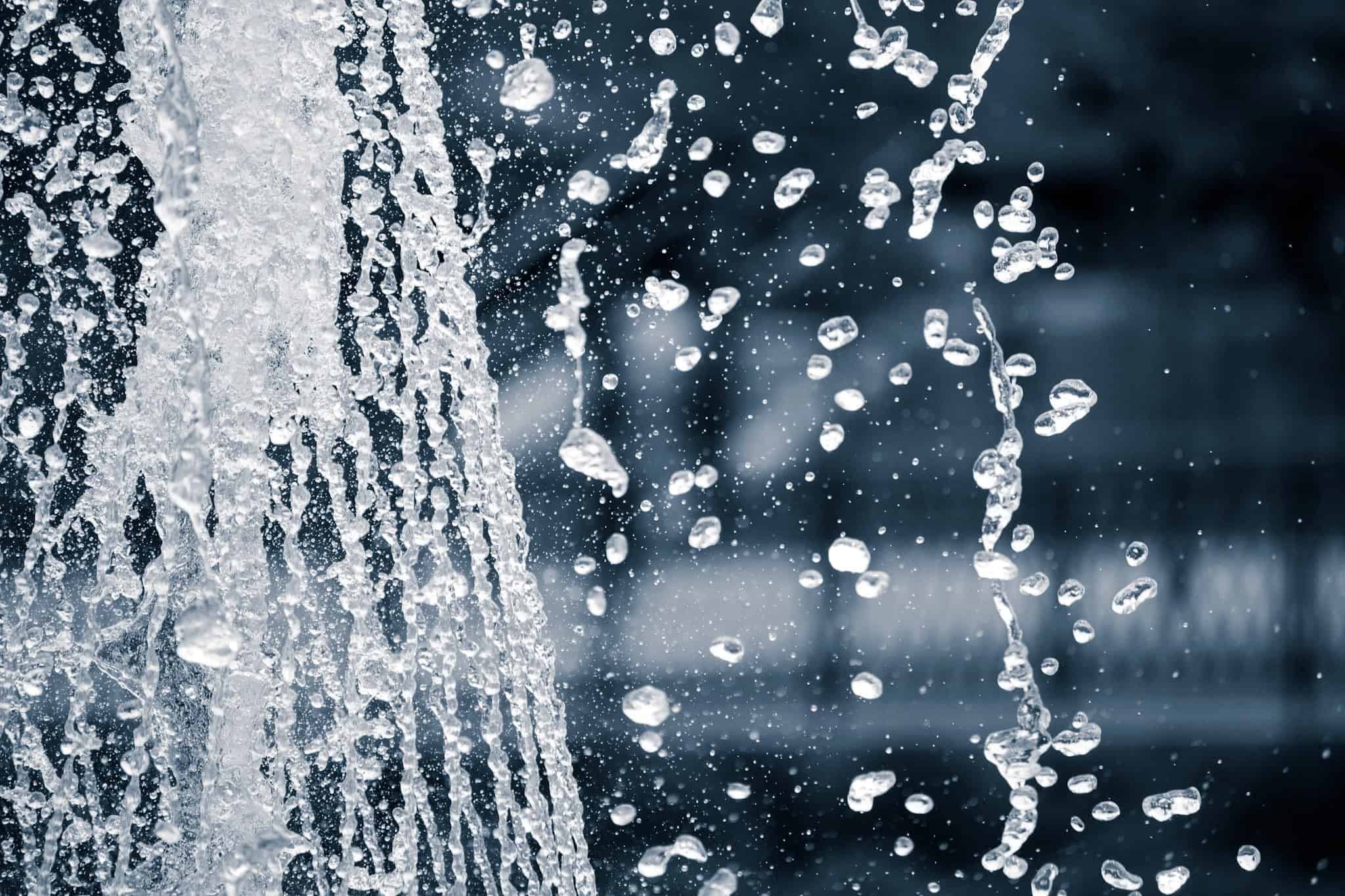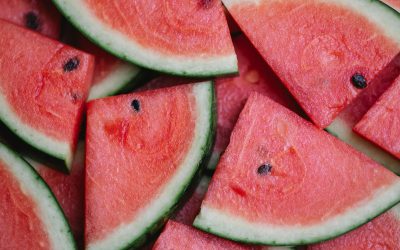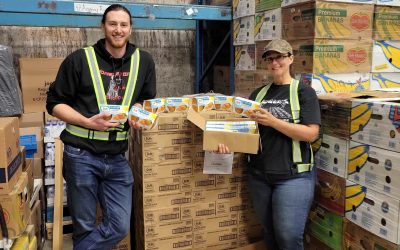You’ve just sat down to enjoy a steak and salad for dinner. You pour yourself a glass of water and as you take a sip, you wonder, how much water did it take to make this meal?
What’s Your Water Footprint?
One kilogram of beef—that feeds about four adults—takes about 15,000 litres of freshwater. This varies depending on how it was farmed and brought to your plate. To put 15,000 litres into perspective, that amount of water would likely overflow an average-sized pool.
Back to your dinner.
You’re not eating a kilogram of beef to yourself, so let’s say that it’s a 6oz steak. That requires 674 gallons or 2,550 litres of water to produce. A simple tomato, lettuce, and cucumber salad requires 21 gallons or ~79 litres of water. You also had a glass of water (another ¼ litre), which may not account for much here, but it all adds up.
Where’s Our Freshwater Going?
The average person consumes 5,000 litres of fresh water a day.
Some of that water you consumed physically through food and drink. Meat and dairy have big water footprints, but most things require water to produce.
In fact, 90% of the water you use daily is virtual or indirect.
Virtual water use is the water that it took to produce everything around you.
That includes the water that it took to produce or farm, manufacture, package, and deliver your meal. But it also includes the hydropower used to light your home, heat your water, power your stove, wash your dishes, and even make your clothing, launder it, and get you cleaned in the shower.
Home consumption of water accounts for 11% of total freshwater consumption. Industry uses 19%. Agriculture uses 70%—some of which you’ve just consumed in your meal.
Blue, Green, and Grey Water Footprints
Water footprints of food items are broken up into three different categories:
- Blue: The amount of surface and groundwater used in production (for irrigation and watering).
- Freshwater can be found in ice, groundwater that is hidden deep under the surface, and surface water such as ponds, lakes, atmosphere, permafrost, and rivers.
- Green: The amount of rainwater used in production.
- Plants naturally absorb precipitation and store it in their roots, as well as evaporate water from their leaves.
- Grey: The amount of water used to dilute pollution created in the production.
For every statistic like 15,000 litres are required to produce one kilogram of beef, it also has a blue, green, and grey water footprint breakdown. Respectively for beef, it’s approximately 93% green (rainwater only), 4% blue, 3% grey water footprint, but varies greatly depending on farming practices.
The largest share of green water used—99% of it—comes from irrigating the feed that the cattle consume. And yes, even entirely grass-fed beef has large water footprints due to the water needed to grow the grasses that the cows graze on.
Water Use and Sustainability
But the Earth is 71% water!
Yes, and only 2.5% of that water is fresh, deliciously drinkable water. The other ~97% of our planet’s water is the ocean, which is too salty in its current state to consume or irrigate with.
As you can see, our freshwater use is unsustainable, especially on a global scale. Especially in developed countries where the value of water seems much too low for how much we need and use it.
Over the past 100 years, global freshwater use has increased sixfold and continues to increase by roughly 1% every year since the 1980s. If we continue on business as usual, by 2030—a mere nine years from now—the world will face a 40% global deficit in freshwater.
Caption: UN World Water Development Report 2021 figure on global water withdrawals over the past 100 years.
Water and Food Loss and Waste
Unfortunately for us and our planet, most of the food that is produced in the world goes to waste. Food loss and waste (FLW) represents nearly 60% of the food industry’s environmental footprint.
When food is lost and wasted along the food supply chain, so is water.
Most of the waste was avoidable.
According to Second Harvest’s The Avoidable Crisis of Food Waste: Technical Report, for every tonne of FLW in Canada alone, 128 tonnes of precious blue water was wasted.
Caption: Blue Water footprint of Total, Avoidable, and Unavoidable Food Loss and Waste in Canada from Second Harvest’s The Avoidable Crisis of Food Waste: Technical Report.
The Link Between the Value of Water and Food Security
Water scarcity is a serious and growing concern. This is especially true when we look at the link between water and food production.
We need water to produce food. Water helps plants grow, boosts crop yields and nutrition levels, allows farmers to expand their production to feed more people, and allows us to grow food during dry seasons or droughts. The more water that a community—or country—has available for agriculture, the higher the food security. There is also known to be less malnutrition, famine, and undernourishment where there is better access to good water.
Water is therefore central to our food security, health, and nutrition.
It is also in high—and ever-increasing—demand as our population continues to grow and more droughts plague our changing climate.
A Drop’s Worth: The High Value of Water
The good news (!) is that we have the power to act responsibly and change our ways.
Only the privileged few have the ability to access and use 5,000 litres of water a day, for example. Three billion people around the globe lack access to clean, safe drinking water.
The same can be said of food insecurity.
One in seven Canadians doesn’t have access to good, healthy food, despite the avoidable food loss and waste. That’s why Second Harvest works to divert surplus food from the landfills (and compost buckets) to help feed those in need.
Just like rescuing food, water conservation doesn’t have to be a burden.
Here’s what you can do to value and conserve the water you use:
1. Change your diet
- Eat more vegetables
- Eat less meat and less often—start off with Meatless Mondays and go from there
- Eat more whole foods and less processed foods
- Eat local and organic whenever possible
2. Change your buying habits to support eco-friendly brands
- Support sustainable and local farmers and producers—and get to know their farming practices
- Talk to your grocery suppliers about their sustainability practices
3. Waste less food and water
- Do a kitchen inventory and get creative to use up your food and leftovers
- Talk to your local grocer about Food Rescue efforts to divert food loss and waste to those community members who are food-insecure
4. Cut back on indoor and outdoor water use
- Turn off the tap!
- Opt for shorter showers
- Fill a water bottle and put it in the back of your toilet—it’s that much less volume of water flushing every time
- Use energy- and water-efficient dishwashers and laundry modes with larger loads
- Conserve water while you’re cooking and cleaning
- Save your leftover water in a jug for your plants
- Dry farm—let the rain water your plants
5. Conserve energy
- Turn off the lights, heat, a/c, and fans whenever you don’t need them
- Support eco-friendly home appliances and businesses
6. Switch to reusable water bottles
- Make sure that you drink enough water every day, but do it in a sustainable way
- Avoid single-use plastic water bottles that create more problems
- There are great ones available, including from Second Harvest’s supporters at Fill it Forward. Learn more about Fill it Forward’s support of water programs below.
7. Educate yourself on water use in your country
8. Celebrate the high value of water every single day!
- Learn more about World Water Week
- Celebrate World Water Day
- Do your part to conserve and value water daily
Fill it forward & inspire the world to reuse

In order to address the problem of single-use waste most effectively, Fill it Forward has focused their efforts on influencing behaviours that inspire reuse. Their team develops macro-level systems and programming for large organizations, as well as micro-level product features and tech that engages individuals to create lasting change.
Every time you scan one of the reuse trackers into the Fill It Forward App, they track in real time the environmental impact of that decision as well as donate to their partners’ clean water, sanitation, or nutrition programs. Those projects range from the Americas to Asia, Africa and beyond.





